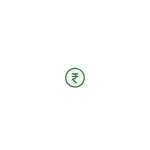Best Debt Investment Options in India in 2024


Money matters, especially investments, are characteristically risky.
You put money in equity or debt instruments, hoping to earn significant returns. However, there is always a probability of losing your principal amount.
Last year, the 10-year return on India’s Nifty 50 index was just 9%. An in-depth analysis showed that an investor who made a fixed deposit (FD) at the start of the decade would have gained a similar pre-tax return as they would have made after investing in equity markets. Low-tax-paying investors could only gain marginal returns from equities.
Debt instruments refer to money lent out to companies instead of equity instruments, which means you own some stake in the company.
Equity instruments include shares or stocks of a listed company that present a unit in the company’s ownership. It makes an investor a part-owner of the company.
Equity markets are risk-prone as returns are not guaranteed. Investors who want to invest in a non-volatile, fixed-income instrument avenue should not opt for equity investments.
In comparison, debt is borrowed capital that businesses use for growth. Debt instruments pay interest and the principal amount at the time of maturity. But you can attain interest monthly or quarterly as well.
Companies and governments often issue bonds to raise capital. Bond investment may or may not be risk-free. Debt instruments are ideal for investors looking for safer options. Because when a company defaults, debt investors are repaid on priority compared to equity investors.
7 Debt Investment Options With Good Returns
| Investment Option | Income | Nature of Returns | Risk |
| Senior Secured Bonds | Fixed Income, Taxable | High Returns | High Risk |
| Debt Mutual Fund | Variable Income, Taxable | Moderate – high returns | Moderate |
| Fixed Deposit | Fixed Income, Taxable | Low | Low |
| Sukanya Samriddhi Yojana | Fixed Income, Taxable | Moderate – high returns | Low |
| PPF | Fixed Income, Non-taxable | Low | Moderate |
| Treasury Bills | Fixed Income | Low | Low |
| Certificate of Deposit | Fixed Income | Low | Moderate |
1. Senior Secured Bonds
Risk: High
Returns: High
Senior Secured Bonds are fixed-income debt securities now available for independent investors in India.
The bond investment platform offering senior secured bonds is Wint Wealth. They are a new-league debt investment option, which is carving a mark with investors.
A secured bond is backed by some kind of collateral, like property or assets of the Issuer. If the Issuer is an NBFC, a secured bond is generally backed by a pool of personal, gold, and vehicle loans provided by the NBFC to its borrowers.
These bonds can also be traded on the stock exchanges and, like all other instruments, have certain risks involved.
2. Debt Mutual Funds
Risk: Moderate
Returns: Moderate – high returns
A debt mutual fund invests in corporate bonds, government bonds and other debt securities. Since this is a mutual fund, some portion may or may not be invested in equities and cash. However, the majority is invested in debt securities.
The returns from debt funds are relatively stable compared to equity mutual funds and stocks; however, they can vary depending on the market.
3. Fixed Deposits
Risk: Low
Returns: Low
A fixed deposit is the preferred investment choice for most Indians. And though there are several investment options in the market, the FD still wins the buck.
A fixed deposit is an investment avenue offered by banks and Non-Banking Finance Companies (NBFCs).
Investors invest a set amount for a set time to earn a fixed interest rate. Investors can also opt for a regular interest payout option. However, returns from fixed deposits are taxable unless you invest in a tax-saving fixed deposit scheme.
4. Corporate FDs
Risk: Moderate
Returns: Moderate
A corporate FD is a fixed-income investment offered by NBFCs (Non-Banking Finance Companies) and HFCs (Housing Finance Companies), delivering higher interest rates over traditional bank FDs without DICGC insurance, with tenures of 1-5 years. These instruments are subject to stringent RBI or Ministry of Corporate Affairs guidelines and are only offered by licensed firms within set deposit limits.
Credit ratings by agencies like CARE, ICRA, and CRISIL gauge their creditworthiness, recommending a preference for highly-rated options. Corporate FDs can be cumulative, where interest is compounded to payout at maturity, or non-cumulative, offering periodic interest payouts.
5. Sukanya Samriddhi Yojana
Risk: Low
Returns: Moderate – high returns
Sukanya Samriddhi Yojana is a debt investment instrument that offers fixed returns and aims to financially support the needs of a girl child.
Investors can invest a minimum of INR 250 and a maximum of INR 1.5 lakhs in the system. The scheme allows withdrawals for the higher education of the account holder to meet their child’s educational expenses.
It can be closed in case of marriage after the age of 18 years. This scheme falls under Section 80 ‘C’ of the Income Tax Act which means it is exempted from tax up to Rs. 1,50,000.
6. Public Provident Fund
Risk: Low
Returns: Moderate
PPF is a debt instrument with fixed returns.
The interest amount on PPF is calculated monthly on the lowest balance between the close of the fifth day and the last day of every month, i.e. for interest calculation.
Thus, only the amount deposited into the account before the 5th of every month is considered. Investors must deposit between the 1st and 5th of the month to maximise their returns from PPF. Since the central government pays interest on PPF, it is a low-risk option.
PPF also falls under Section 80 ‘C’ of the Income Tax Act and attains tax exemption up to Rs. 1,50,000. However, it must be noted that PPF has a lock-in period of 15 years; hence, it is not a liquid scheme.
7. Treasury Bills
Risk: Low
Returns: Low
Treasury bills are an investment instrument with relatively less risk, as the Government of India issues these. They are not very popular in India. However, they are slowly gaining traction.
The bills bearing interest for the investor are offered for a short term, usually up to one year. The minimum amount to be invested is INR 25000, which multiples of INR 25000 can increase.
Three types of bills 91 days, 182 days, and 364 days are offered through auctions.
8. Certificate of Deposit
Risk: Low
Returns: Moderate
Commercial banks and some financial institutions are authorised to issue certificates of deposits. CDs have a fixed interest rate and a fixed term of the investment.
The minimum amount to be invested is INR 1 lakh for a given period, which accrues interest as per prevailing rates. Once the interest rate is determined, the fluctuations have no bearing on these deposits, ensuring guaranteed returns. However, premature withdrawal of funds attracts a penalty.
9. Government Bonds
Risk: Low
Returns: Moderate to High
A government bond is issued to borrow funds from the general public. When you buy a bond, you lend money to the government, and, in return, you are paid periodic interest payments as per a pre-decided coupon rate. At maturity, you can redeem the principal amount, also called the “face value” of the bond. The bond may be issued at a discount to the face value.
The Reserve Bank of India issues bonds on behalf of the government of India. These are tradeable and fungible government securities or G-Secs. In common parlance, government securities with less than one year of maturity are called treasury bills, and those with longer maturity are called government bonds.
Understanding The Relationship Between Interest Rates and The Value of Debt Investment
The relationship between interest rates and the values/prices of debt instruments is inversely correlated. When market interest rates decrease, the selling prices of debt instruments increase due to the higher coupon rates associated with them.
In contrast, new bonds are issued at higher rates when interest rates rise, reducing the value of existing bonds with lower coupon rates. This adjustment lowers their selling prices, making them more appealing.
Conclusion
These 7 investment avenues show that there are more options in India, along with fixed deposits and savings accounts. Today, there are relatively safe investment options that can give decent returns and also diversify your portfolio.
However, it is important to understand the avenue you are investing in before you allocate your money.
Happy Winting!
Frequently Asked Questions (FAQ’s)
Which type of debt funds give highest return?
High-yield debt funds, categorised as a non-investment grade by credit rating agencies, usually provide the highest return as a trade-off against being in the non-investment grade category.
Are Government Bonds risky?
Government bonds come with a sovereign guarantee by the Government of India. Therefore, the possibility of a default is practically zero. So, if you are a risk-averse investor, these bonds are perfect for you.
Do I have to pay tax on interest received from corporate FDs?
Yes, the interest received from corporate FDs is fully taxable according to your tax slab.
Which debt fund gives the highest return in India?
Returns from debt funds in India are subject to fluctuations influenced by factors such as interest rates and market conditions. Identifying a single fund consistently offering the highest return is challenging due to these factors. Investors are advised to seek guidance from financial advisors, conduct thorough research on different funds, and make informed investment decisions.
Is it reasonable to invest in debt funds?
Choosing debt funds is beneficial to preserve capital while seeking improved post-tax returns compared to Fixed Deposits (FDs). It also serves as a favourable choice for meeting short-term financial goals.
Is there any lock-in period in debt mutual funds?
Debt funds do not have a lock-in period like Fixed Deposits (FDs). In addition to offering higher post-tax returns, this flexibility is another advantage of investing in debt funds.
Are bonds tradable?
Yes, the bonds listed on NSE and BSE are tradable, subject to the availability of buyers and sellers. Please note the liquidity for bonds is low as compared to equity.




